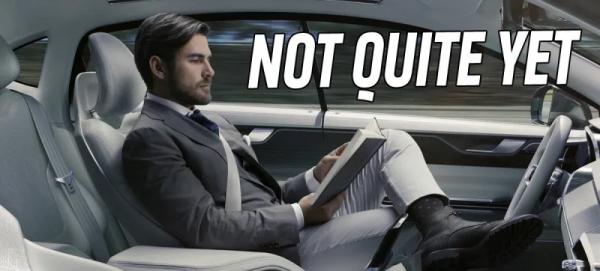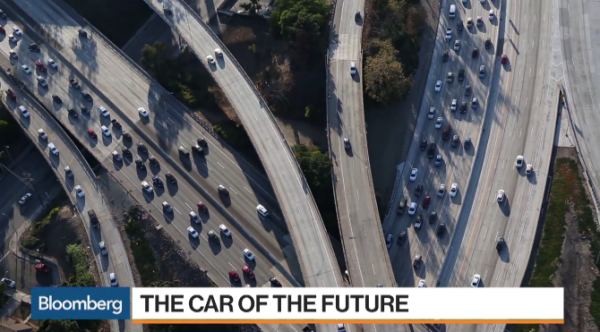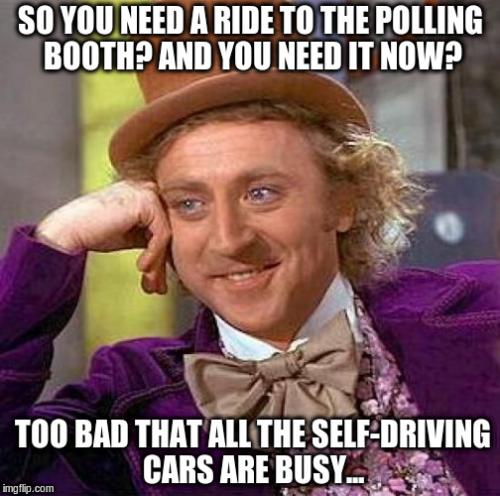Driverless cars: the wrong people solving the wrong problem
Not all disruptions are equal. Or disrupt the right things.

<u><em><strong>CAPTION:</strong>
<a href="https://jalopnik.com/dont-believe-the-hype-about-a-driverless-society-being-1790269631" target="_blank">Click for image source</a>
</em></u>
As driverless technologies improve, “Amazon and Apple will take us all for a ride”. Really? Let’s see.
The good: end of personal car ownership
More and more people every year realize how better their own lives, and the cities they live in, if they could stop driving and owning a car: no more time wasted driving, instead of sleeping, watching movies or chatting in the passenger seats. Senior or disabled citizens could go wherever they want. Of course, private driverless cars would make us waste as much time as today in traffic, not less:

But if those cars were shared, not privately owned, it would be a thousand times better: no more times wasted on parking, no more money wasted on insurance, fuel,maintenance… Besides, cities could make much better use of the huge amounts of space now wasted for parking. Me, I can’t wait to see and live all this. But totally autonomous cars? On-demand? From whom?
The ugly: the wrong disruption
The piece linked above argues that there are only two companies that can, thanks to the advent of driverless electric vehicles) sufficiently change the way the auto and ride-share industry works: Apple and Amazon. Apple by offering luxury services, and Amazon by offering ride-hailing services with the same driverless vehicles that would deliver goods. If that happens “the auto industry is going to be severely disrupted. Owning a car will really become superfluos” (and independent car rental businesses will be priced out of existence, of course.)
True. But I argue that that would be the wrong disruption, from the wrong players. Amazon (but the same arguments apply to Apple) cannot replace personal cars because it must move LESS vehicles than today, and slower, NOT more. Besides, it is not Amazon that should run such a service! Any monopolistic provider of driverless ride-hailing services will only give you a ride where and when IT wants to.

The bad: the scam of Level 5 and Level 4 automation
“Level 5” autonomous driving means that a car is really autonomous. A Level 5 car has no steering wheels or pedals, because the humans inside it never need to take control, wherever the car is, in any condition. Such cars would be safer because they would have no driver that can ever get drunk, distracted, tired or violent.
The only problem with Level 5 driverless cars is that they seem almost as likely and difficult to get right as perpetual motion. Earlier this year Ford and other car makers proved me right on this (again). Later, I read elsewhere that “Estimates for getting some Level 5 vehicles on the road have moved from the early 2020s to the late 2020s”. Oh, and don’t forget that driverless cars expect 5G connectivity everywhere they may go: yeah, right.
Level 5 may also backfire badly on car makers: cars whose passengers cannot make any mistake at the wheel, because there is no wheel, will kill much less people than today. That is sure. But when they do, it will be only the car maker’s fault. Every time.

Where do the impossibility and liability limits of Level 5 lead? To Level 4, of course. “Level 4 automation” means that a car drives all by itself, all the time… except when it sees something too difficult to manage, in which case it calls the driver to take charge (or the driver can just do it whenever she feels it necessary)
Level 4 is the direct evolution of the “automatic driver assistant systems” (ADAS) that we already use today: cruise control, emergency braking, lane centering and so on. Level 4 is great for the car industry, because it is much easier to do, greatly reduces the number of traffic deaths and, above all, let drivers take the blame, and pay the bill, when someone is hurt.
As good as this looks, Level 4 has two huge problems, one socio-economical and one merely technical, but just as huge as the first. The profitability of Level 4 lies on the assumption that enough people will still want to drive a car, and will be able to afford owning one. The technical problem of Level 4 is that it simply cannot work in the overwhelming majority of real-life cases. Just look again at this picture:

As Level 5, this is a big waste of money: a stering wheel? Why? As Level 4, it is ridiculous, if not a fraud, or instigation to kill. How on Earth could someone reading like that, half a meter away from wheel and pedals, be ever ready to “take control”? Even pornstars confirm this.
With Level 4, drivers will just be too distracted all the time (if not just falling asleep all the time) to act quickly enough. Second, and much more serious, they will not be capable of doing the right thing, even if there were enough time, which is higly unlikely: the less time a driver spends training herself, that is: driving for real, the less trained he will be to do the right thing in one second.
OK, no Level 4, no Level 5: what then?
Personal mobility is essential. It is part of freedom. No question about it. Fact is, providing it with private cars was a stupid idea since the beginning. Whatever engine and driving system those cars use. Even ride hailing, unless regulated differently, increases traffic instead of reducing it. Hailing services for private rides, using driverless cars would be, by definition, completely controlled by their remote owners: a control and surveillance nightmare, unless it were regulated as I suggest here.
As safety goes, the best way to reduce number and seriousness of car crashes, whoever drives them, is to only allow on the streets cars that are physically unable to exceed speed limits. Not a trivial task, I know. But one that should get much more attention.
At a higher level, personally owned vehicles for mass transportation were a stupid idea when it first implemented, and an unsustainable one now. Because of both social problems like poverty, inequality or pollution and raw physical limits, from space inside cities to scarceness of raw materials.
“Don’t give me driverless cars or Uber, give me better trains!", said somebody.
Who writes this, why, and how to help
I am Marco Fioretti, tech writer and aspiring polymath doing human-digital research and popularization.
I do it because YOUR civil rights and the quality of YOUR life depend every year more on how software is used AROUND you.
To this end, I have already shared more than a million words on this blog, without any paywall or user tracking, and am sharing the next million through a newsletter, also without any paywall.
The more direct support I get, the more I can continue to inform for free parents, teachers, decision makers, and everybody else who should know more stuff like this. You can support me with paid subscriptions to my newsletter, donations via PayPal (mfioretti@nexaima.net) or LiberaPay, or in any of the other ways listed here.THANKS for your support!